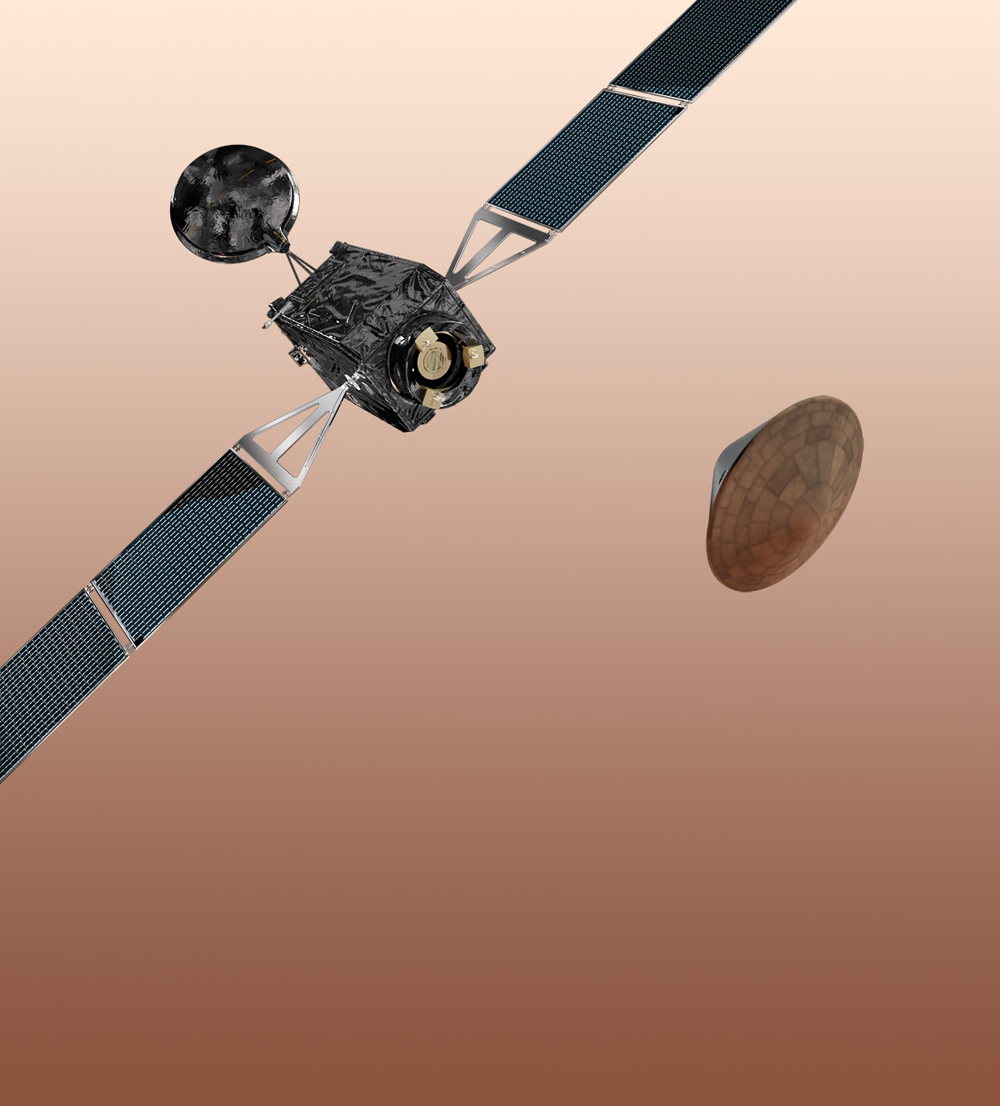Robot Mars Lander Gets Experiments for 2016 Mission

NASA and the European Space Agency (ESA) have picked the experiments for a new international Mars lander that will launch toward the Red Planet in 2016.
The Mars lander, called the Entry, descent and landing Demonstrator Module (EDM), will probe the Martian atmosphere as it hurtles toward the planet’s surface. The lander will also take a variety of environmental readings and return the first-ever data on electrical fields at the surface of Mars, ESA officials announced Friday (June 10).
"The EDM will be landing during the dust-storm season," said Jorge Vago, ExoMars project scientist, in a statement. "This will provide a unique chance to characterize a dust-loaded atmosphere during entry and descent, and to conduct interesting surface measurements associated with a dust-rich environment." [The Best (and Worst) Mars Landings Ever]
A few days of science on the Martian surface
The ExoMars 2016 mission, which is expected to launch in January 2016 and arrive at Mars nine months later, consists of two parts: the EDM lander and the Trace Gas Orbiter. The orbiter will scan the Martian atmosphere from above for about two Earth years, measuring levels of methane and other gases of possible biological importance on the Red Planet.
The EDM, as its name suggests, is more of a demonstration unit than actual science vehicle. Its main task is to test out technologies for future visits to Mars. However, researchers are also going to squeeze a few science observations out of the lander during its two- to four-day surface mission. [Mars: A Spacecraft Graveyard]
Two joint investigations, for example, will use the EDM's entry, descent and landing engineering data to reconstruct its trajectory. This will help scientists learn something about Martian atmospheric conditions, ESA officials said.
Get the Space.com Newsletter
Breaking space news, the latest updates on rocket launches, skywatching events and more!
Once the lander touches down, a scientific payload called DREAMS (Dust characterization, Risk assessment, and Environment Analyzer on the Martian Surface) will kick into gear, serving as an environmental station.
Teams of scientists and engineers from nine different countries will develop a suite of sensors to measure wind speed and direction, humidity, pressure and surface temperature, as well as the transparency of the atmosphere.
Electric fields, too
DREAMS will also make the first measurements of electrical fields at Mars' surface, ESA officials said. Electrical fields are likely to be generated when grains rub against each other in the dust-rich atmosphere.
The EDM will also have a color camera system. No design has yet been chosen for the camera, but
a decision is expected before the end of this year, officials said.
"The selection of these science investigations complements the technological goals of the EDM," Vago said. "This has been an important step that will allow our team to move on to the development
of this important mission element."
ExoMars 2016 is the first of two planned Mars missions NASA and ESA are developing together.
The other project. called ExoMars 2018, will drop a rover onto the Red Planet to look for evidence of past or present life. Another goal of ExoMars 2018 is to demonstrate technologies for a future sample-return mission.
The ExoMars 2018 rover will be equipped with a drill to access environments up to 6.5 feet (2 meters) beneath the Red Planet's surface. Subterranean environments are more protected from the harmful ultraviolet radiation bombarding the Martian surface, making life more likely to survive underground.
ExoMars was originally designed to deliver two rovers, ESA's ExoMars and NASA's MAX-C Explorer/Cacher. But budget concerns recently impelled the two agencies to consolidate.
Follow SPACE.com for the latest in space science and exploration news on Twitter @Spacedotcom and on Facebook.
Join our Space Forums to keep talking space on the latest missions, night sky and more! And if you have a news tip, correction or comment, let us know at: community@space.com.

Space.com is the premier source of space exploration, innovation and astronomy news, chronicling (and celebrating) humanity's ongoing expansion across the final frontier. Originally founded in 1999, Space.com is, and always has been, the passion of writers and editors who are space fans and also trained journalists. Our current news team consists of Editor-in-Chief Tariq Malik; Editor Hanneke Weitering, Senior Space Writer Mike Wall; Senior Writer Meghan Bartels; Senior Writer Chelsea Gohd, Senior Writer Tereza Pultarova and Staff Writer Alexander Cox, focusing on e-commerce. Senior Producer Steve Spaleta oversees our space videos, with Diana Whitcroft as our Social Media Editor.









